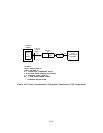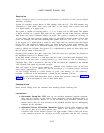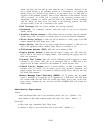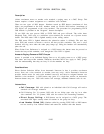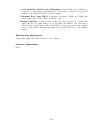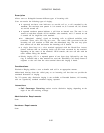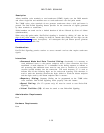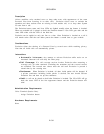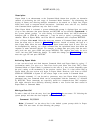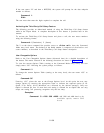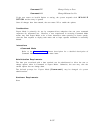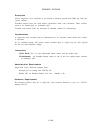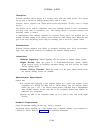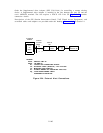END-TO-END SIGNALING
Description
Allows multiline voice terminals to send touch-tone (DTMF) signals over the DDD network
and allows single-line and multiline users to send touch-tones over dial pulse trunks.
The 7300H series voice terminals do not generate touch-tones when a dial pad button is
pressed. The End-To-End Signaling feature provides for the conversion of signals generated
by these terminals to touch-tones.
Dialed numbers are toned out for a default duration of 60 ms followed by 60 ms of silence
(administerable).
When using dial pulse trunks, End-To-End signaling is invoked by dialing “#” after the last
digit of the
called number or waiting for about 10 seconds after dialing the last digit (see the
Interdigit Timeouts feature description).
All subsequent dial pad button presses generate
touch-tones on the outside line.
Considerations
End-To-End Signaling permits stations to access network services that require touch-tone
signals.
Interactions
● Command Mode And Data Terminal Dialing: Occasionally it is necessary to
send additional tones to the remote endpoint after a data connection has been
established. A mark character “$” is embedded in the dialing sequence to indicate to
call processing that additional tones must be sent prior to insertion of a conversion
resource (pooled modem) into the connection.
The mark character “$” is used to
indicate that all the following digits are for end-to-end signaling. This character is
used to mark the boundary between the digits dialed to reach the distant endpoint
and the digits used by the distant endpoint after it answers.
● Repertory Dialing: Repertory Dialing can be programmed on the 7300H series
voice terminals. End-To-End Signaling works properly with this feature.
● Speed Dialing: (For V2 systems only) #3 must be stored to start End-to-End
Signaling.
● Virtual Facilities (V2): #3 must be stored to start End-to-End Signaling.
Administration Requirements
None
Hardware Requirements
None
2-133




